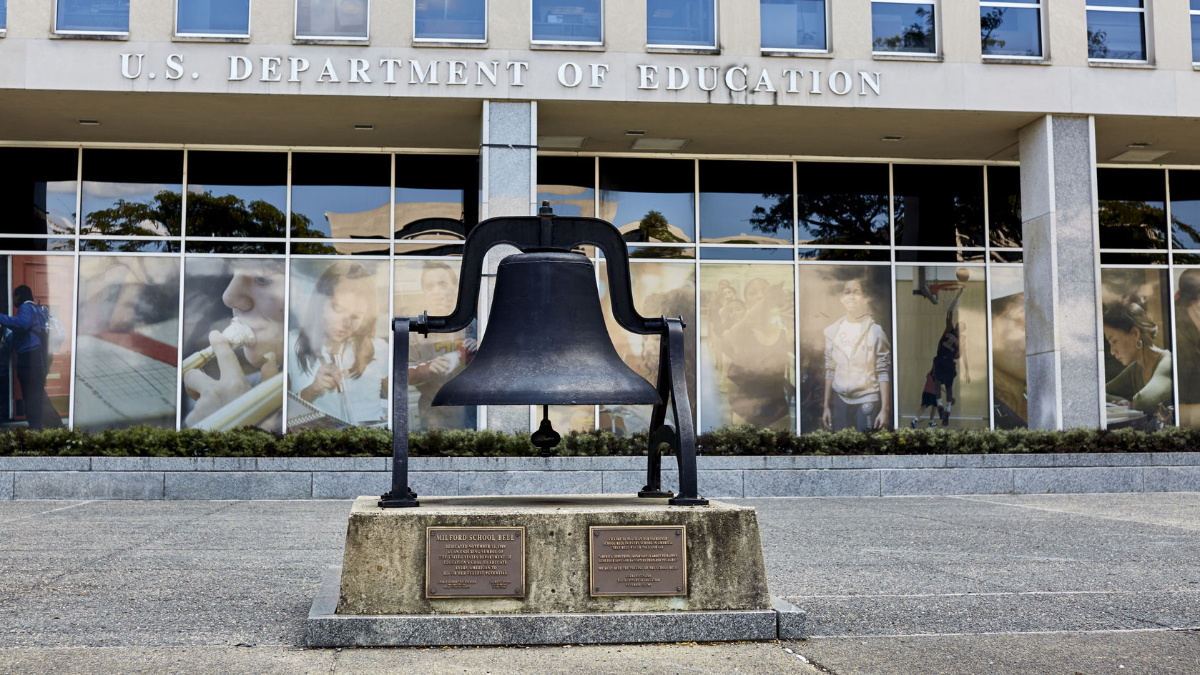It’s the end of the world as we know it—at least that’s what some people would have us believe about President Trump’s education budget.
It’s “a devastating blow to the country’s public education system,” according to National School Boards Assn. CEO Thomas Gentzel. More like a “wrecking ball,” says Lily Eskelsen García, president of the National Education Assn. teachers’ union. No, it’s a veritable “assault on the American Dream,” insists John B. King Jr., former Obama administration secretary of education.
Such hyperbole is reminiscent of the early 1980s, when President Reagan’s opponents battled his administration’s education cuts, and it’s about as inaccurate today as it was back then.
Trump wants to reduce the U.S. Department of Education’s discretionary budget by $9.2 billion, from $68.3 billion to $59.1 billion. Close to two-thirds of that reduction (63%) comes from eliminating programs that are duplicative or just don’t work.
The administration is proposing a 10% cut in TRIO programs and a cut of almost a third in GEAR UP programs. GEAR UP and TRIO (which despite the name consists of nine programs) are supposed to help at-risk students who hope to go to college, but who might not make it.
At the behest of the Education Department, the Mathematica Policy Research Group studied a TRIO program and found weaknesses, which it first reported in 2004. The final report found “no detectable effects” on college-related outcomes, including enrollment and completion of bachelor’s or associate’s degrees. In a striking acknowledgement that these programs don’t hold up under scrutiny, lobbyists for the programs got Congress to ban the Education Department from setting up control-group evaluations of TRIO and GEAR UP.
Another sign of dysfunction is that—despite a demonstrable lack of success—grants to run TRIO and GEAR UP programs almost always get renewed. For example, in California, 82% of those who had grants in 2006 to manage this “no detectable effects” TRIO program still had those grants a decade later.
The K-12 programs proposed for elimination in the Trump budget are similarly ineffective.
In 1994, the Clinton administration started the 21st Century Community Learning Centers program, which promised to provide disadvantaged children with after-school enrichment to improve their academic performance. Nearly $18 billion spent over two decades later, there’s scant evidence of success. “It’s a $1.2 billion after-school program that doesn’t work,” according to Mark Dynarski of the Brookings Institution. He should know.
Dynarski worked at the U.S. Department of Education during the Clinton administration and directed the 21st Century Community Learning Centers’ national evaluation while he was a researcher at Mathematica Policy Research. The three evaluations published between 2003 and 2005 concluded that the achievement of participating students was virtually the same, but their behavior was worse, compared with their peers who weren’t in the program.
Another program deservedly put on the chopping block is the School Improvement Grant (SIG) program. Enacted in 2001 as part of President George W. Bush’s No Child Left Behind Act, this program gave poorly performing schools fistfuls of cash to turn themselves around and raise student achievement. Turned out the SIG program was more buck than bang—lots more.
Total SIG program funding under the Bush administration was less than $126 million. Regular annual appropriations skyrocketed during Obama’s presidency, starting at $526 million. They remained near or north of a half billion dollars throughout his administration, totaling more than $7 billion to date—including a one-time infusion of $3 billion in American Recovery and Reinvestment Act funding.
The Obama administration publicly revealed the SIG program’s colossal failure on Jan. 18, 2017, just hours before President Obama’s appointees departed. According to the final evaluation by the American Institutes for Research and Mathematica Policy Research for the Education Department, SIG had “no significant impacts” on math achievement, reading achievement, high school graduation, or college enrollment across school and student subgroups.
Commenting on the evaluation, Andrew R. Smarick, a former U.S. deputy assistant secretary of education, called SIG “the greatest failure in the history of the U.S. Department of Education.” Seven billion dollars in taxpayer money was spent, and the results were the same, as Smarick put it, “as if this program had never existed.”
Cutting costly, ineffective government programs isn’t the end of the world. It’s part of “[our] moral duty... to make our government leaner and more accountable,” as Trump stated during a budget meeting in February. His budgetary effort to cut waste includes the Education Department for good reason.









